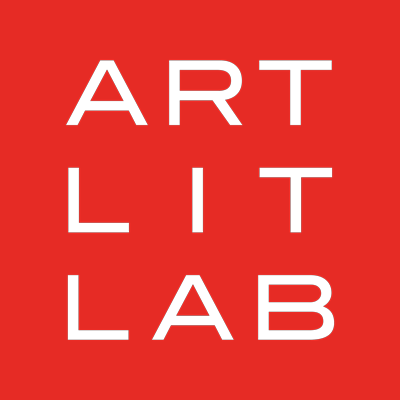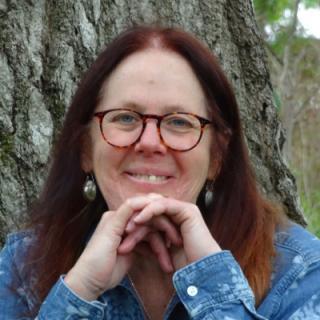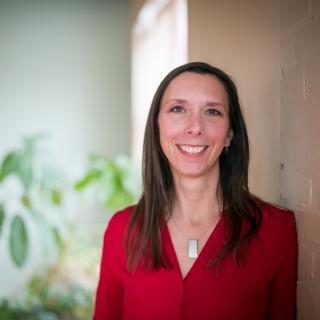“Begin here, with Pennsburg, the township where Wild Run Farm, the verdant world at the center of my childhood, lies.”
It’s an alluring invitation from writer and poet Alison Townsend, and it comes in one of the first essays of The Green Hour: A Natural History of Home (UW-Press). She says it was at Wild Run Farm that she and her siblings were “kind of like little animals, just playing with each other in the natural world.” Now professor emerita of English and retired from the University of Wisconsin–Whitewater, the verdant world of Townsend’s childhood continues to inform her writing and shape her worldview. The earliest memories she shares in this memoir are visceral – having her hair brushed and braided by her mother every morning in front of a Victorian mirrored dresser painted pink just for her, the eldest daughter. But these cozy intimacies seem to take on deeper meaning even as she puts them into words. Her mother’s early death is a touchstone throughout the book, one that she turns over and examines at each stage of life as she explores new homes and ecologies. Each essay reveals a bit more and brings the reader deeper into Townsend’s personal journey through landscapes of memory, loss, love, depression, relocation, and growth.
After years of falling in love with the mountains and oceans of California, Townsend turns her attention and poetic interest in the later chapters of the book to the plants, animals, and waters of the four acres in south central Wisconsin that she now calls home. The essays are creative in style and form, offering astute observations that could be read like prayers or songs. She follows her own trail backwards, collecting crumbs and noticing details that may only be apparent with the wisdom of hindsight. In a lovely, meandering exploration of the rivers that have been a part of her life, whether she noticed them at the time or not, she concludes, “I am, gathered with my many selves beside the river of then and now, listening and watching for what comes next, my life remade by moving water as it quickens, gathers, and falls, rushing always toward the next bend, around which the shining path seems to go on forever.”
Townsend will be giving a reading at Art Lit Lab on Saturday, November 18, 2023 at 7 PM, along with other Wisconsin women writers who were honored with Wisconsin Writers Awards last year. The event marks the launch of the 2023 award submission period.
Jessica Becker interviewed her over Zoom in October of 2023. The following conversation was edited for clarity and length.
Jessica Becker: What is the first thing that you wrote that was published?
Alison Townsend: I had a poem published in my high school literary magazine about my room in my house. I had never read Virginia Woolf, A Room of One's Own, or anything like that, but it was a poem about having my own space as a 16- or 17-year-old. I don't know whatever happened to the North Salem High School Clarion literary magazine, so that poem is lost to time. But it meant a lot to me.
We lived in a very old house back East and my sister and I inhabited what had been former servants quarters. They were tiny little rooms with slanting roofs like something out of a Victorian novel. There was a door at the bottom of the stairs that could gratifyingly be locked against our three brothers. They were hot as hell in the summer, cold in the winter, but they were our own space. And that's where I wrote my first poems and essay-like musings. But the poem was the only thing I ever published in the high school literary magazine because I was too shy to be in the creative writing club. I've always thought it was really significant that the first thing that I ever put out into the world was about the kind of creative space that a woman needs or, in my case, a young woman needs. That private space nurtured me as a young writer.
JB: In the Author’s Note of The Green Hour, you share a quote from Robin Wall Kimmerer’s book Braiding Sweetgrass, “Even a wounded world holds us, giving us moments of wonder and joy.” Can you speak to her influence on your work or anybody else who you look to for inspiration?
AT: My husband and I are very big fans of Kimmerer’s work. From her we learned the word “Puhpowee.” It’s in a chapter called “The Grammar of Animacy” in her book, Braiding Sweetgrass, which I used to teach in my Nature Writing class at UW–Whitewater. The word means “the force which causes mushrooms to push up from the earth overnight.” Just today we were very excited because seven or eight puffball mushrooms came up overnight. My husband had been working on our back hill in the oak savanna and he came in this morning saying “Puhpowee, puhpowee.” He did some research and learned they’re an indicator of good soil and a healthy fungal network. I find it fascinating, and mushrooms always make me think of Robin Wall Kimmerer. My husband is a climate activist, so I live with an awareness of environmental doom, but I think it's important to have a counterbalance to that. We have to have hope in some way, you know. Kimmerer’s vision and her ability to instill hope is really important. It has informed my own attitude and work.
Pilgrim at Tinker Creek by Annie Dillard influenced me profoundly when I was in college. That book is really about finding the wild right outside your back door. I had been an American Studies major, so I was immersed in Emerson and Thoreau and all these guys, and then here was Annie Dillard. I thought, wow, this is really different. Then I spent a summer living on a pond in Vermont with my college friend, which I wrote about in The Green Hour. I had a little battered paperback of Tinker Creek with me during my “Thoreau” summer at South Pond. Annie Dillard woke up the idea inside me that a woman can write about those things.
JB: Your observations of nature are poetic and imbued with symbolism. I wonder if this way of seeing is something you chose to hone or if you feel like it chose you?
AT: I kind of feel like it chose me. I think back to my early years on my parents' little farm in Pennsylvania and to my mother, who instilled in me this sense of wonder. She was trained as a zoologist and was also a self-taught artist. She loved to draw and she modeled for me a way of looking at the world. Up until the age of nine, my siblings and I lived in the country and we were kind of like little animals, just playing with each other in the natural world around us. It seemed animate to me, it seemed alive from the very beginning. That way of seeing came naturally to me.
Then I was also trained as a poet, and I think poetry is all about paying attention. The poet Nickole Brown has said that “poets are noticers” and you know, they are. When we moved to our Wisconsin property, I was so delighted to be in the country again. I wasn’t very familiar with the Wisconsin landscape and so I apprenticed myself to the land and started writing about what I was noticing in more intimate detail. So I guess what I’m really saying is that it's a mix. Not everybody who grows up in the country goes on to be a close observer. One of my friends said to me recently, “You got more from your mother in nine years than lots of people get in a lifetime.”
JB: In one of the later chapters of The Green Hour you wrote that during the pandemic you had this sense of gratitude that you lived in such a beautiful place. Can you tell me more about what it means to you to live in a beautiful place?
AT: Beauty can be found in many places. I taught a class at UW–Whitewater that should have been called Women in Nature, but officially it was called Gender, Ethnicity, and the Environment. And I had a student from Milwaukee who said to me, “I have no natural beauty to write about. My backyard is filled with broken glass.” So I suggested she write about the glass. And she wrote about the glass and the air and the light and the wind in the trees. It gives me chills to think about that. It was gorgeous. It was like standing inside this little glass cathedral or something. And so I do think you can find beauty in the tiniest patch of earth, and that's really important and really soul nurturing.
I took a class during the pandemic with Nickole Brown called “The Kingdom of Green.” She had us pick a tree and study the tree for the entire eight weeks that we were working with her. So I took my lawn chair and I set it up under the grandmother oak on my back hill and just spent a lot of time with her. We had to use a little jeweler's loop to look at the bark. We had to really look for beauty at the most minute level. It was a real lesson in deep looking at something I thought I knew well.
JB: Can you tell us how the watercolor by Helen Klebesadel was chosen as the cover of The Green Hour?
AT: I feel amazingly honored and blessed to have her artwork on my cover. As far as I'm concerned, it totally makes the book! The designer, Trudy Gershinov, did such a good job.
How that happened was that I went to a show of five women artists at the Watrous Gallery called Uprooted: Plants in a Changing Climate. I walked into the gallery, and I saw one of Helen's paintings that looked like a prairie being burned. She's quite well known in Wisconsin, but this was the first time I had seen her work.
It was so arresting, and I was just like, wow. I immediately went to her website and started looking at her art. I thought, when my book gets to be a book, I want this artwork as my cover. And so when the publisher asked me for ideas, I suggested Helen. They approached her and she said yes. So that was how that happened. It was such a gift. I've been really fortunate with all my books. I've picked the art for the cover of both my poetry books, my chapbook, and this book.
JB: What does a good day look like to you these days?
AT: Now that I’m retired I try to always make the morning be for writing, which is when I am freshest. I always begin by reading and writing poetry. Then up until about one o'clock is writing time. The other thing that's really important to me is physical exercise during the day. I used to be a runner, but I can't do that anymore, so I'm a dedicated walker. Those are the two most important things in my day. If I haven't done one of them, I feel off. Walking is a contemplative activity, so it nourishes the writing.
I’ve gone on a number of residencies and to some remote places to write, and it's good to go away. It totally clears your head. But just looking out this window at this stately white oak tree every day, watching it change through the seasons, that’s grounding.
I think we have to be forgiving of ourselves as writers because the world doesn't support the writing life. Intrusions come in, but I set the time aside if I can. I write best at home, despite the many distractions here, like my husband eating cereal loudly a few rooms away. It's like that line from Virginia Woolf’s diaries, where she says, “Leonard will eat apples in the next room.” My version is, “Tom will eat Cheerios in the living room.” But maybe those diversions teach us something about steadfastness and returning to the task.
I'm not a writer who can write eight hours at a stretch. I tend to write in bursts and then I'm like a wilted flower that can't do anything. There is a lot of staring out the window. And reading and walking around in this little bedroom-turned-into-a-study thinking I'll never write again. I’m doing that right now. I just wrote an essay for my next collection and now it seems like I'll never write another one. I wrote the majority of The Green Hour while I was working full time and I look back and I have no idea how I wrote that book. But of course, I was writing it an essay at a time, word by slow word, sentence by slow sentence. In my better moments, I remember Emerson’s words: “Adopt the pace of nature. Her secret is patience.” The Green Hour accrued that way, teaching me something in the process. That’s what writing does in the end. It teaches us something that we didn’t know we knew.


